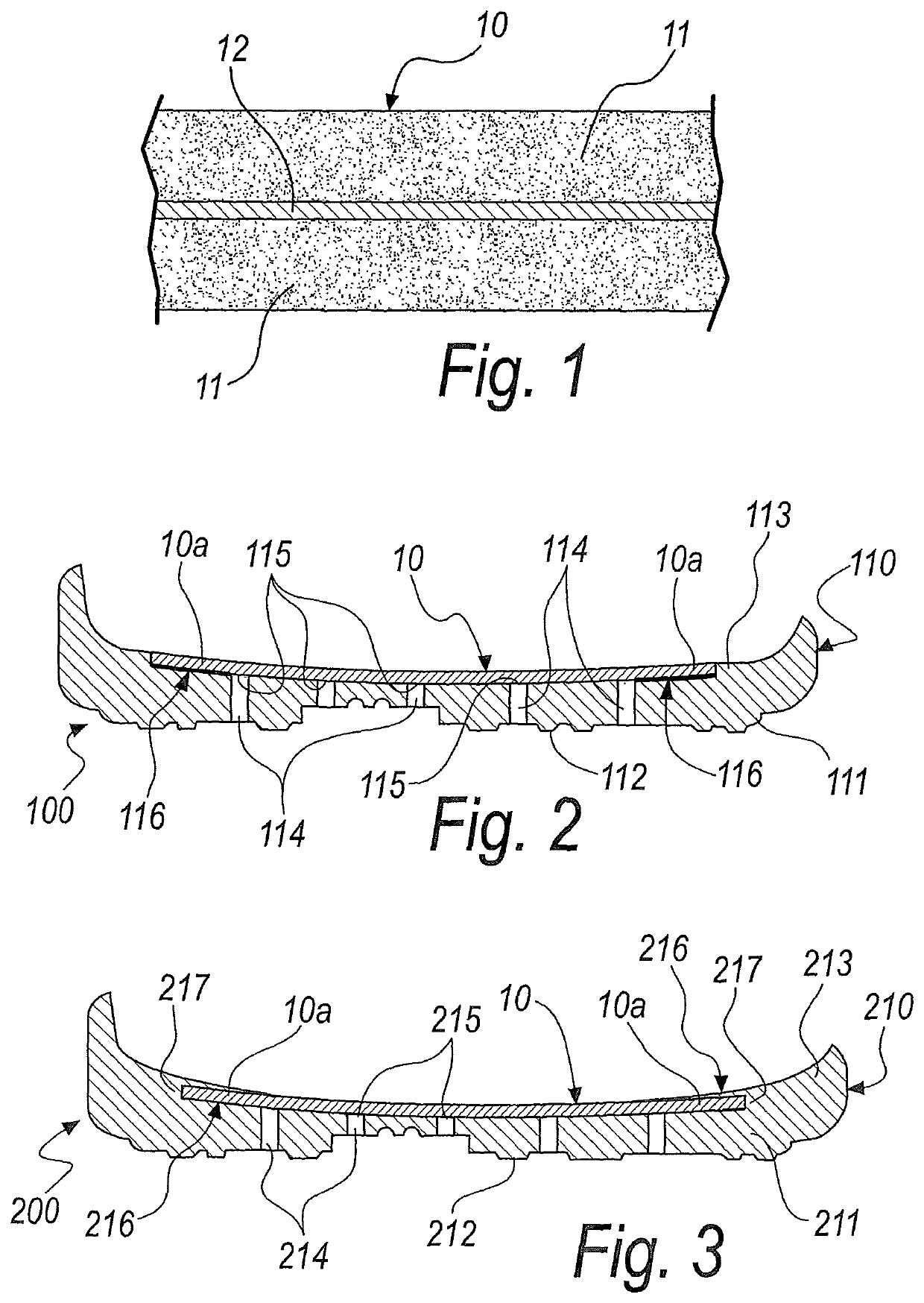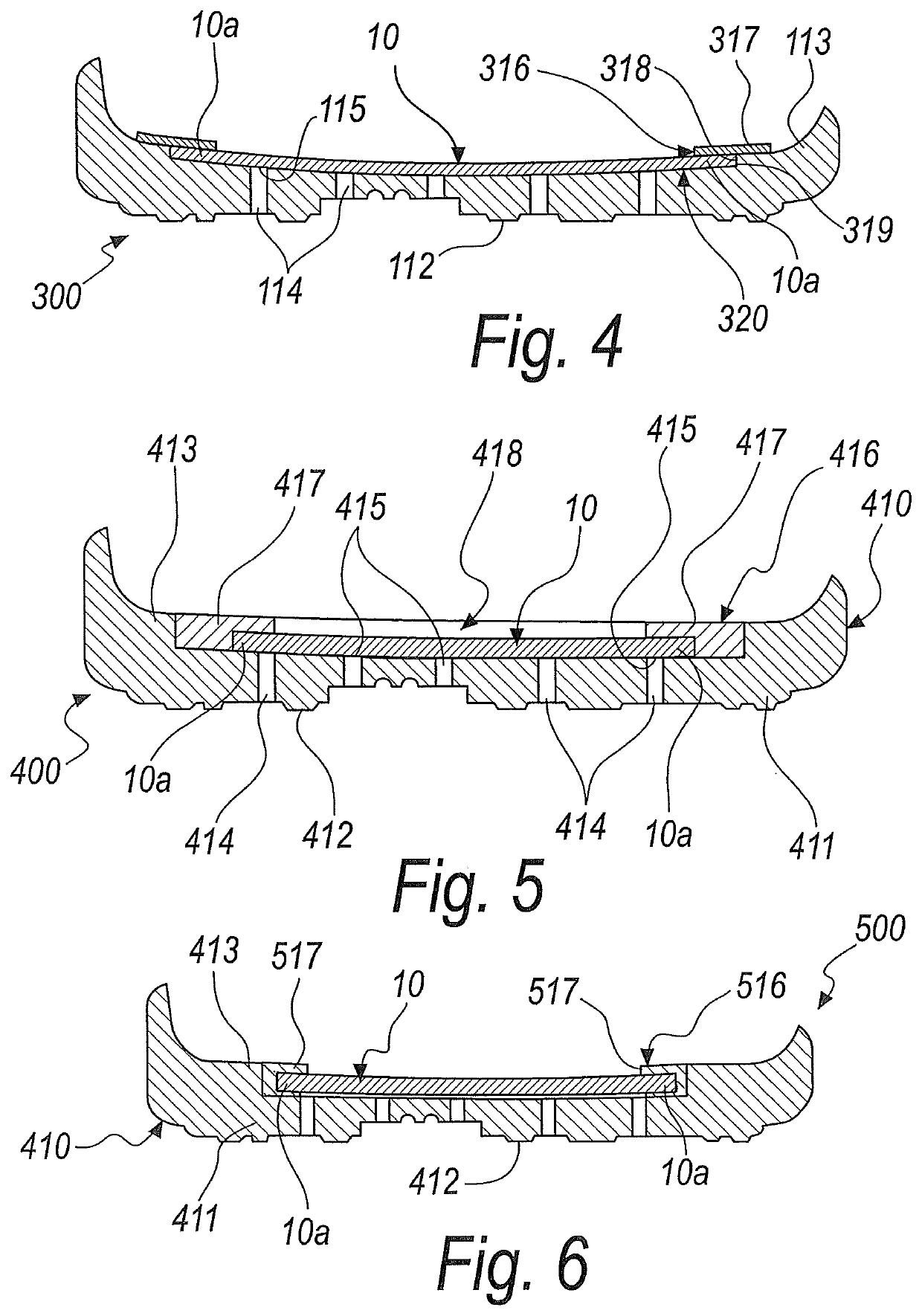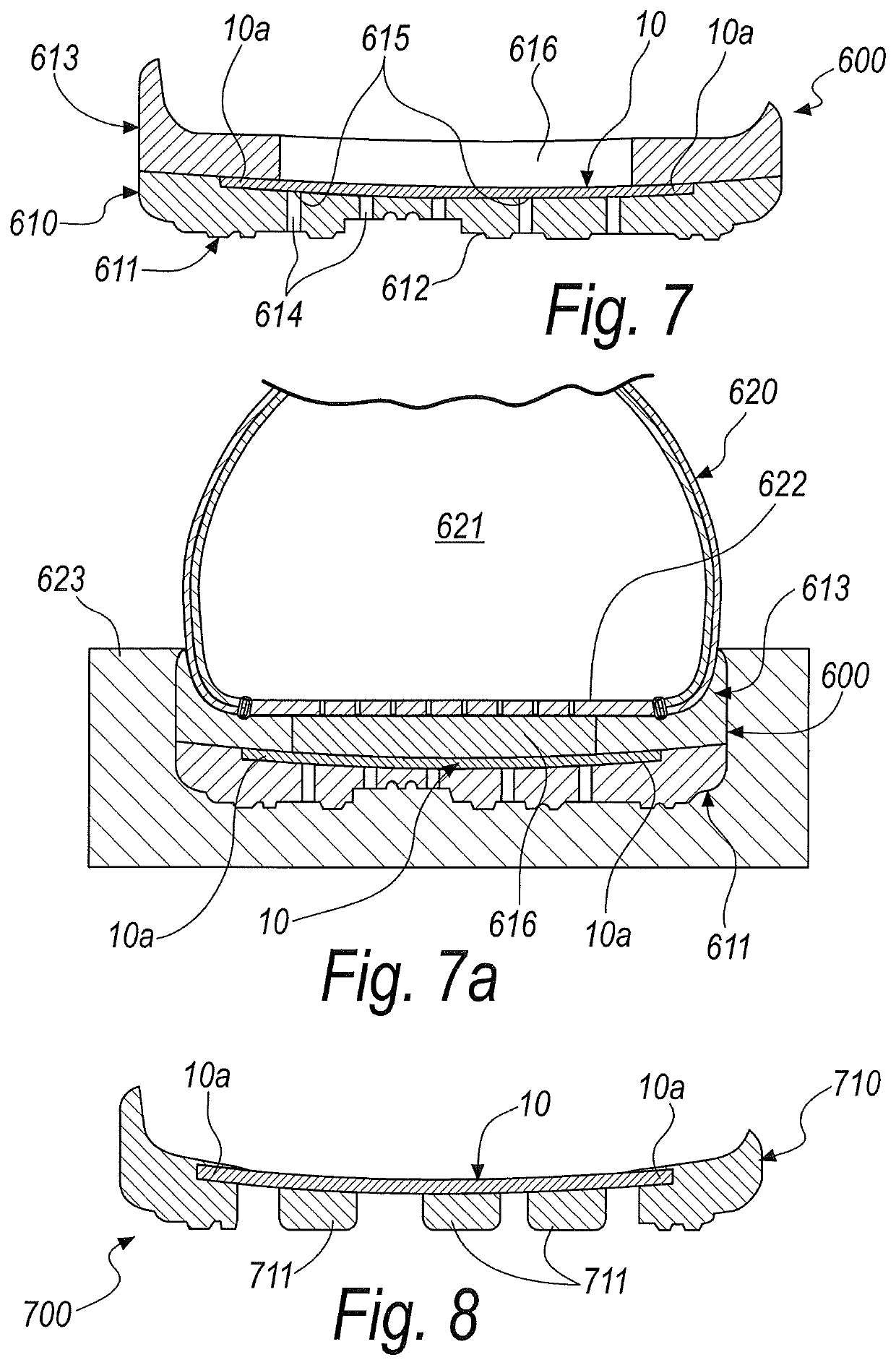Insert for vapor-permeable and waterproof soles
a technology of vapor permeable and waterproof soles, which is applied in the direction of soles, uppers, bootlegs, etc., can solve the problems of limiting the area of the sole assigned to vapor permeation, poor mechanical strength of the film providing the membrane, and bad odor, so as to achieve equal waterproofness durability and the effect of reducing the amount of water vapor
- Summary
- Abstract
- Description
- Claims
- Application Information
AI Technical Summary
Benefits of technology
Problems solved by technology
Method used
Image
Examples
Embodiment Construction
[0069]With reference to the figures, the reference numeral 10 generally designates an insert for vapor-permeable and waterproof soles, a particularity of which consists in that it has a stratified and cohesive monolithic sheet-like structure, comprising a plurality of functional layers 11 made of a polymeric material that is impermeable to water in the liquid state and permeable to water vapor.
[0070]The term “sheet-like” is used to reference the shape characteristic of a structure that has one dimension that is greatly reduced with respect to the other two, said dimension being its thickness, which in any case, according to what is commonly understood so as to distinguish a sheet from a foil or a membrane, remains substantial.
[0071]However, one should not understand that this shape characteristic in itself compromises the ability of the insert to bend or flex.
[0072]According to the invention, the insert for soles 10 has such a thickness as to give it a penetration resistance of more...
PUM
| Property | Measurement | Unit |
|---|---|---|
| thickness | aaaaa | aaaaa |
| thickness | aaaaa | aaaaa |
| pressure | aaaaa | aaaaa |
Abstract
Description
Claims
Application Information
 Login to View More
Login to View More - R&D
- Intellectual Property
- Life Sciences
- Materials
- Tech Scout
- Unparalleled Data Quality
- Higher Quality Content
- 60% Fewer Hallucinations
Browse by: Latest US Patents, China's latest patents, Technical Efficacy Thesaurus, Application Domain, Technology Topic, Popular Technical Reports.
© 2025 PatSnap. All rights reserved.Legal|Privacy policy|Modern Slavery Act Transparency Statement|Sitemap|About US| Contact US: help@patsnap.com



